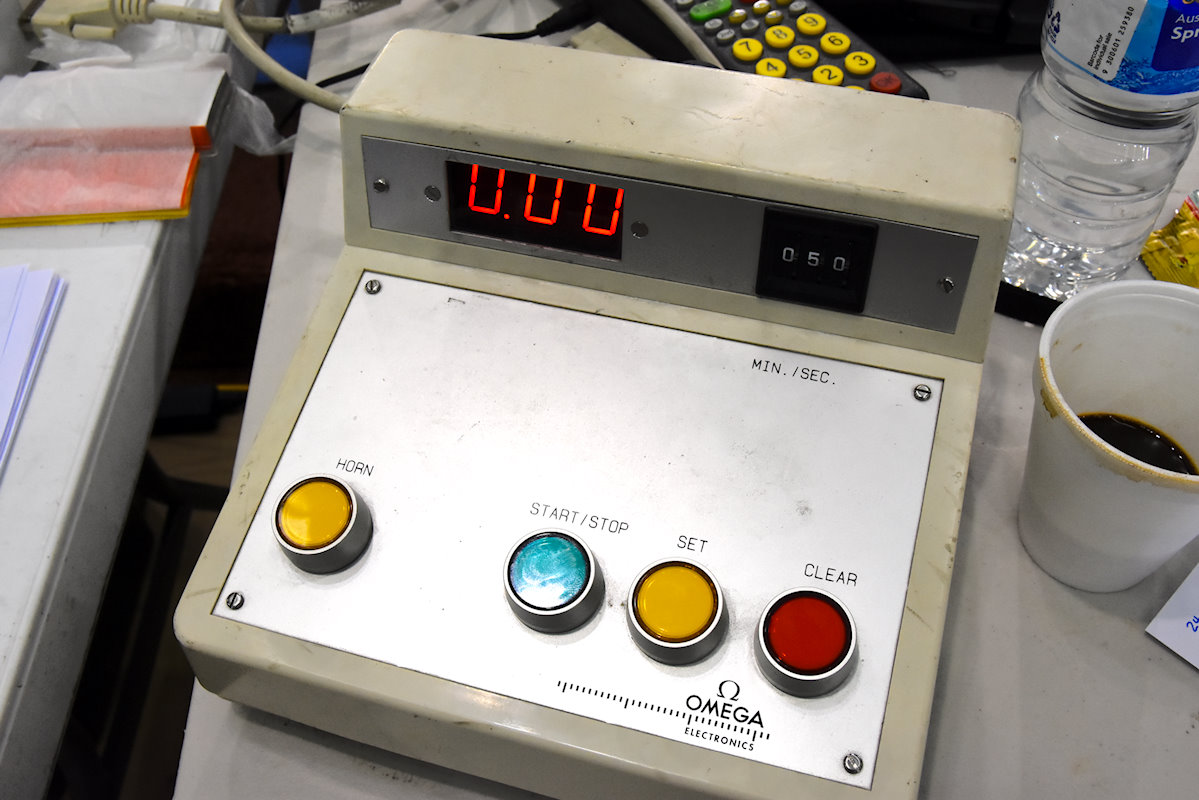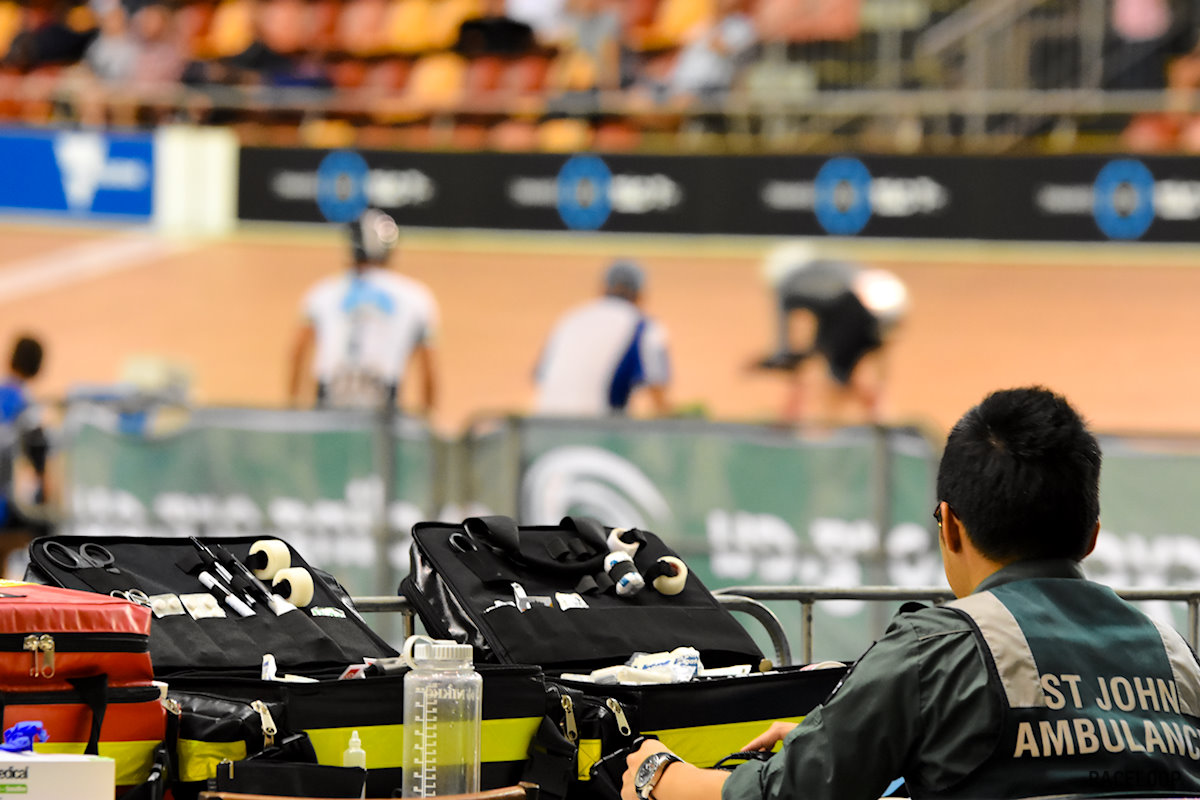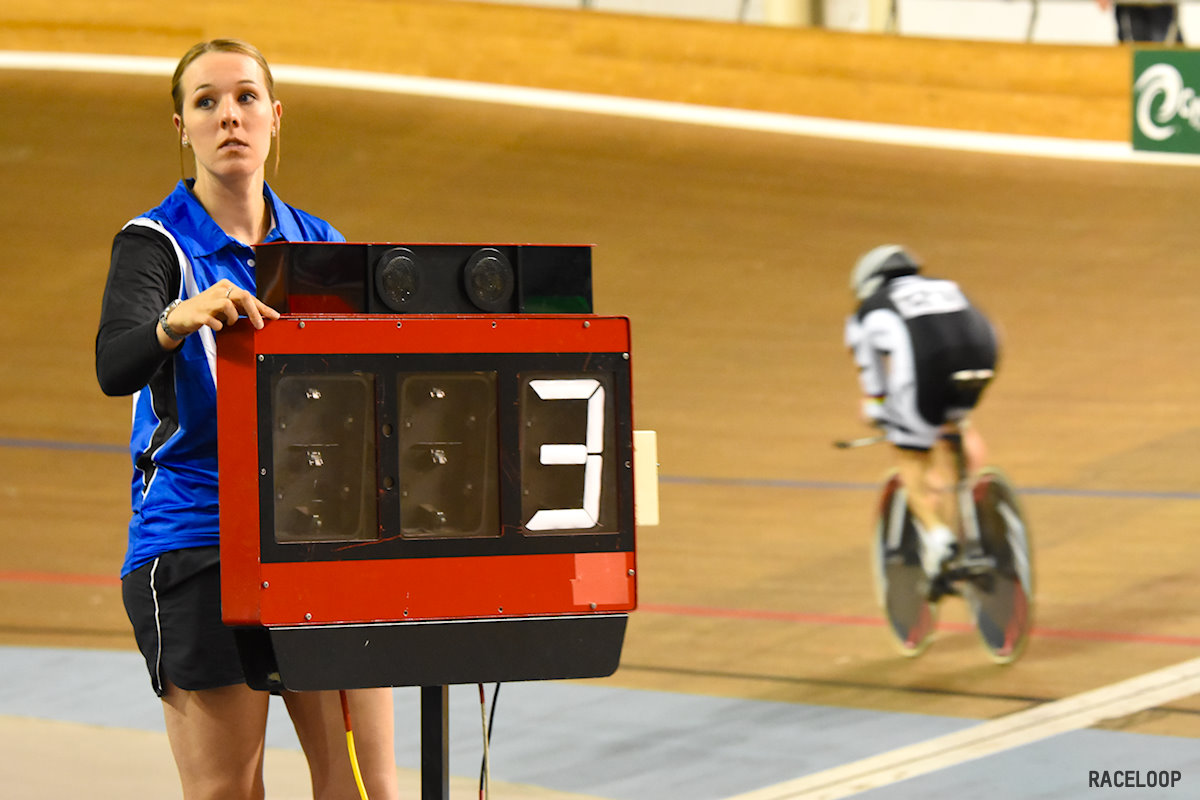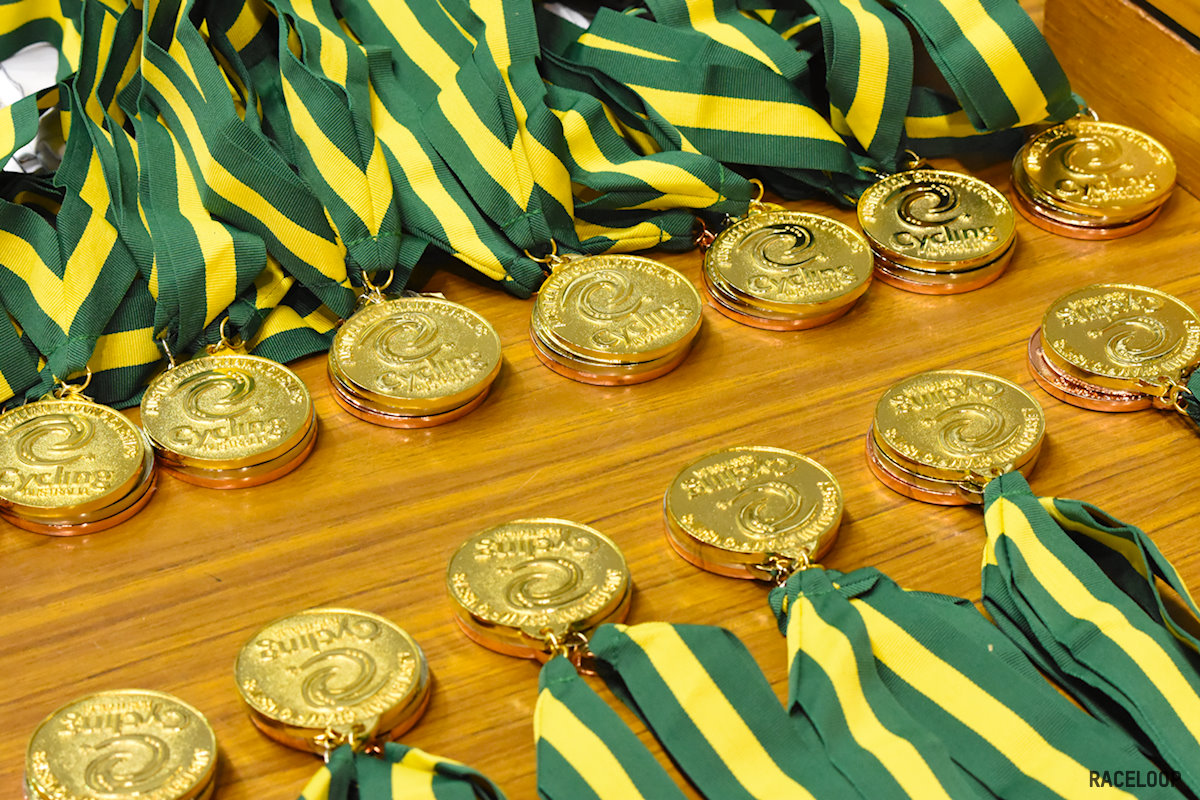event management, time keeping, timekeeping, timing, track, track cycling, track event
JT
0 Comments
198 Views
Part 4: Track Event Timekeeping
Other articles & resources in this series can be found here.
In the velodrome everything is under the microscope. Racing is continuous, fast paced and the outcomes often come down to fractions of a second. In this environment, the opportunities for problems will be presented throughout the event. Timekeeping encompasses the task of determining, calculating and publishing the results at your event. Accuracy with respect to the level of the event is critical for the success of both the event and the fairness of competition. As the publication of start lists, programs and results are a major touch point for participants and spectators alike it is worth devoting some thought to this topic when building your event.
Club level events can utilise rudimental systems whilst larger events generally need something more involved. Either way, timekeeping at your event can be done with varying levels of complexity and the path you chose will determine the quality of the outcome. There are really three options available – each with its pluses and minuses.
| Timekeeping Method | Comment |
| Pen & Paper | Simple, effective and an excellent choice for club racing. The big drawback of this method is that it is not scaleable beyond a club level event. Communicating results is cumbersome and slow and there is no automated error checking to speak of. |
| Spreadsheet | Spreadsheets are an excellent way of collating and recording results. They are quick, simple, effective and many people know how to use them. The problem with spreadsheets is that they do not generate additional documentation such as event lists, programs, start sheets and result sheets. They are not scaleable and as the event grows, they become difficult to manage. For club use they are ideal. |
| Metarace or other timing software | Using specialised timing software is a given for larger events. The software will usually link into the timing system and the collation of results becomes an automated process driven by the computer operator. Event documentation can be printed directly from the software and some packages support uploading directly to web based “live” results services.
These software packages generally have a steep learning curve and require trained operators. Ask the venue operator for assistance. |
Basic timekeeping
For club races and club combines, fun is the priority and races can be judged with the eye rather than with electronic timing equipment. Generally speaking, handheld timing is only accurate to a tenth of a second however the added complexity of electronic timing has the potential to ruin the event whilst shifting the focus from enjoyment. A judge’s eye is sufficient to ensure a satifactory result so forget the cost and complexity of managing an electronic timing system. The only exception may be where you are looking to learn an electronic system under race conditions. In this scenario the difficulty of setup is worth the time spent.
The judging of the event will typically be undertaken by the commissaires (or helpers) appointed to help judge the racing. All the race director needs to do is ensure the judges have pens, paper, stop watches and coffee. For Point Scores and Madisons, it is an idea to use a computer with a simple spreadsheet used for updating the points table and the laps gained and lost.
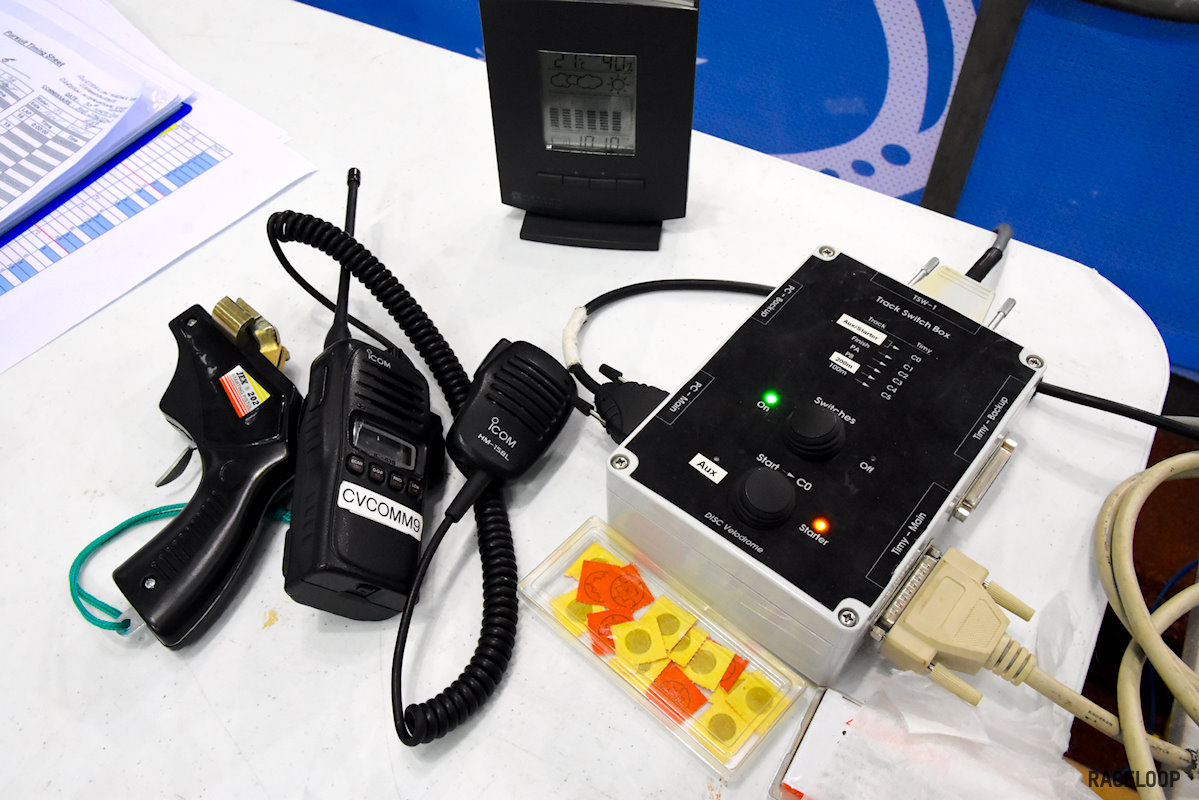
Fully automatic timing systems
Fully Automatic Timing (FAT) systems are timing systems which captures digital race results accurate down to at least 1/100th of a second (0.01). FAT systems require a start signal, a running time (from a chronometer), and capture device to record the finish. True FAT systems require the chronometer to be activated automatically by a start signal, rather than manually (e.g., like with a stopwatch) and the finish time must also be captured digitally to remove any human error or delays from the equation. Most importantly, the finish line results must be accurate to at least 1/100th of a second—but preferably to 1/1000th of a second or more.
There are four basic components of a FAT system.
| Timekeeping Method | Comment |
| Start & finish sensors | The start and finish sensors detects the finish line signal and instantly relays it to timing software via the chronometer for accurate fully automatic timing and results. |
| Chronometer | The chronometer is a high precision timing device capable of displaying/recording seconds and fractions of a seconds. A proper chronometer will have been tested and certified by an official neutral body (Contrôle Officiel Suisse des Chronomètres – COSC). |
| Finish Line Camera | A finish line camera aimed at the finish line captures 1,000 frames per second (or more) for accurate, time-stamped results images. |
| Timing Software | Timing Software captures photo-finish results and start/finish sensor information whilst integrating hardware like displays, wind gauges. and additional cameras. |
Whether it is a road or track event (or any other sporting event) Fully Automatic Timing (FAT) systems are simply a tool to be used as evidence of the outcome of a race. They are not to be treated as the source of truth for race timekeeping at your event.
State and national level events have a far greater requirement for accurate timekeeping. Often events at this level are part of the process for state or national squad selection so the accuracy of the results needs to reflect this therefore results should be recorded electronically using a FAT system.
From a race director’s point of view, electronic timing systems reduce the burden of quickly producing accurate race results for the riders, they improve the quality of the event, and they make post event tasks such as writing race reports far easier. However despite these benefits, many race directors do not understand the limitations of these systems – we’ll cover some of them later.
Although this equipment is incredibly expensive, many indoor velodromes or state associations have electronic timing systems that can be used for conducting events. Simply ask the venue manager for what is available. This will include start gates, chronometers, tape switches and finish line cameras.
For each particular event you plan to run the following table lists the timing requirements for each event.
| Event | Equipment Required |
| All Events |
|
| Flying 200m |
|
| Match Sprints
Keirin |
|
| Scratch Race
Point Score Elimination Madison Any other bunch race |
|
| Pursuit
Team Pursuit |
|
| Time Trial |
|
As this table shows, track cycling does not require a wide range of timing equipment to successfully run an event. In fact, once set up, the operation of the timing system can be conducted predominantly from the timing desk with little manual intervention.
Setting up the judging & timekeeping area
Timekeeping is a challenging task so it is important to ensure that the timekeeping team are provided with a setup that will facilitate their best possible concentration and communication. With all the noise, action and requests this can be difficult to achieve but with some basic planning, a reasonable setup can be devised.
Firstly, it is worth clearly cordoning off the timekeeping and judging area so there is a clear separation between competitors (and their coaches/managers) and the staff. Secondly, nominate a single point of contact for managing requests between, the judges/timekeeping teams and the event participants & commissaires. Generally this would be the Commissaire’s Secretary. Thirdly, place signage in relevant places which instructs people not to approach the judging/timing staff. Although this will not stop everyone, it will stop the smart ones. It’s fairly straight forward.
The fully automatic timing system operators
As explained earlier, using a FAT system is always recommended (required) for larger events. In addition to the setup, these systems require trained operators who can drive the equipment during the event. Ideally, the minimum number of people required will be two – a finish line camera operator and a results computer operator – but in some cases, an experienced operator can combine these two tasks and do it alone. Having one person is not ideal as the lack of redundancy leaves little room for error.
| Operator | Comment |
| Finish Line Camera | This person works together with the judging team to determine the results of each race using the Finish Line Camera. The results are verified by the chief judge and relayed to the results computer operator. |
| Results Computer | The results computer operator inputs and records the results from each race. Results are verified by the chief judge. |
| Track Secretary | Not every event has a Commissiare who acts as the secretary but this is an important role for ensuring the smooth running of the publication and management of results, rider lists and the event program. Part of the secretary’s role to manage the information flows between the Judging panel and the event. |
Because the FAT operators require specialised training, suitable people can be difficult to find. In fact, track cycling is very specialised and operators from other sports or disciplines (i.e. road racing) can not simply turn up and run a track event. There are too many rules and nuances which make track events too specialised. The good thing is that FAT systems for track cycling can be learned by people who have basic computer skills. If you get stuck finding someone with specific track timing knowledge, speak with the state association (or similar) who may be able to assist.

Metarace timing software
In Australia, Metarace is the most common timing software for track (and road) cycling as it works with all of the existing electronic systems at Australia’s indoor velodromes, it is open source and it is distributed under the GPL license (i.e. effectively Free). Importantly, it is built specifically for track & road cycling so it handles the UCI rules correctly. The only problem for new operators is that it is undocumented and has a steep learning curve. Once the learning curve overcome, the software is powerful. So powerful that it has been used for numerous UCI events on both the track and the road (Tour Down Under, UCI track meetings, National Road and Track Championships, etc).
An immediate benefits of this software is that it produces all of the event documentation with the click of a button. Start lists, rider programs, and result sheets are all part of the package. The format is neat, legible and clear. Ordinarily, these documents are painfully slow and error prone to produce so having one single input to produce multiple documents is a huge time saver that only adds to the quality of the event.
Tape switches
A tape switch is a special pressure sensitive tape laid along the track that records when a tyre rolls over it. The tape is made by simply sandwiching two pieces of copper together – one flat piece, one convexed piece. When pressure is applied to the tape the convexed piece deforms and is forced into contact with the flat piece. This completes the circuit which allows current to flow thus allowing a pulse to be sent back to the chronometer to record an accurate time. It’s a very simple and effective mechanism.
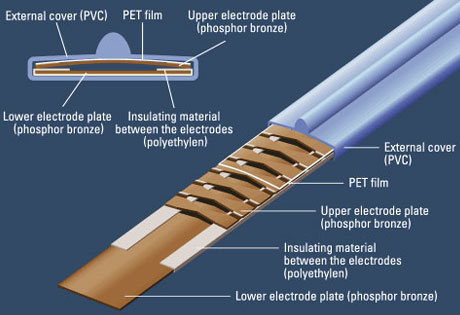
Finish line camera
Finish line cameras are not your ordinary cameras. Also known as “line scan” cameras, these cameras take up to 10,000 frames (photos) per second where every photo is only a 2-3 pixels wide. Each new line is placed next to the previous line to produce what appears to be a continuous photo. This is the best and most accurate way of judging the placings in non-timed events. Some cameras can be linked to the timing system’s chronometer so that the calculation of highly accurate times can be delivered.
Despite being precision pieces of equipment, finish line cameras are not without their limitations. At the London Olympics the Men’s Keirin Final saw van Velthooven (NZL) and Mulder (NED) receive equal third place as the finish line camera was unable to determine the true third place. The decision was made that the finish was too close to call, and both riders were given bronze medals. Although this situation is rare and unlikely to be encountered in competition it does highlight that the cameras are not perfect – even at the highest level
A cheaper albeit less accurate alternative to a line scan camera is to use a high speed full frame camera which can operate at a frame rate of over 100 frames per second. By coupling this type of camera with video analysis software such as Coach’s Eye, this alternative may be suitable for club and combine level events. These cameras will not satisfy the requirements for higher level events.
Transponder timing
It is important to understand that although active transponder timing is generally OK for verifying “down to the second” placings in road racing, under no circumstances is it accurate enough for recording “split second” times on the track because of the error inherent in the timing loop. It should certainly not be used to record places in either track or road events and anyone who suggests otherwise does not know what they are talking about. Transponder placings must always be verified against the output of the finish line camera.
The reason for this is that active transponders respond to a magnetic field that is generated by a wire which is laid out to create a loop of wire across the track – from one side to the other and back. Because this loop can be up to 80cm wide, the transponder can be activated anywhere within this 80cm band meaning second place transponder could (and often does) activate before the first place transponder. In short, use transponders to speed up the input of results but don’t use transponders to determine actual race result.
Electronic timing equipment malfunctions
Fully Automatic Timing equipment is fantastic when it works. It saves time and improves the accuracy of the results. Unfortunately this equipment is not fail safe and occasionally it can (and does) malfunction. This table below lists four of the most common electronic timing equipment problems you may need to deal with as a race director:
| Malfunction | Possible Work Around |
| Tape switch(es) stops working | Revert to manual timing. You will need three judges each using a stop watch to record times from which the average time will be taken. |
| Finish Line Camera stops recording | Pick places manually. This is incredibly difficult in events such as the Omnium where all places are part of an overall points tally.
In this case, the field needs to be broken down into smaller chunks using multiple place pickers/judges. Judge 1 picks places 1 to 4. Judge 2 picks places 5 to 8, and so on. |
| Start gates stop sending the start pulse to the chronometer | This is actually not as big of a problem as it seems. If the pursuit line tape switches are still working simply switch the start pulse to be triggered by the tape switch instead of the gate. This will give a more accurate reading in any case as it makes “jumping the gate” a pointless exercise. |
| Results computer operator has a melt down | Revert to manual timing or have a backup operator. Try to shield the person from last minute program changes, spurious requests and other distractions to allow him/her to gain composure. Unfortunately, this can be a high stress environment and it is hard to recover from this. There may need to be a backup operator on hand. |
Reverting back to manual timing
Regardless of the sophistication of the timing system, a manual backup of results must always be kept by the judges. This will also serve as a cross check against the electronic system.
When all else fails the best (only) course of action is to simply revert to manual timing. Picking the places should be broken down so that no judge is choosing more than a handful of riders. As discussed earlier the field should be broken down into smaller chunks using multiple place pickers/judges. Judge 1 picks places 1 to 4. Judge 2 picks places 5 to 8, and so on.
Manual timing is considered accurate down to a 10th of a second so it is fairly accurate. Each of the timing points around the velodrome should have three people timing the race and the time will be calculated based on the average of the three recorded times. This is simple, it works and it’s not as uncommon as you think.
Weather station
At any state or national event a weather station is important when state, national or world records are broken. Because ambient temperature, humidity and air pressure have a significant impact on lap times, the weather details at trackside during the session in which the time was set must be recorded along with any record beating time. For every increase of 20hPa, pursuit lap times will increase by approximately 0.1 second. Doesn’t seem like much but over the course of a 16 lap pursuit it adds up to be a considerable distance.
Madison peg boards
Madison races are hectic and difficult to score. The races can change quickly and it is easy to lose track of who is up and who is down a lap. A simple and effective way to keep track is by using a “Peg Board”. This is simply a board with a list of teams and a row of holes next to each team name which helps keep track of the number of laps up or down. Starting from zero in the middle, there will be several peg holes either side for negative and positive numbers. When a team takes a lap, move the team’s peg one hole to the right.When a team loses a lap, move the team’s peg one hole to the left. It’s a very simple system but very effective.
Conclusion
Good judging and timing at your track event will be critical for it to be a success. This article has just touched the surface in terms of judging and timekeeping. At the club level it is simple. All that is required is a stop watch, a pen & paper, and a few helpers to pick the place getters. It could even be done by one person if no helpers are available. State and national level events are a different story altogether. Although you can use manual timing for state level events this is less than ideal for many of the reasons we have discussed in this article. At the national level, an automated electronic timing system is mandatory. After reading this article you should start to have a basic understanding of how an electronic timing system can help you and the event.
In the next (and final) article in this series I will talk about Risk Management and some of the areas that need to be considered.
Other articles & resources in this series can be found here.
Share this content:
